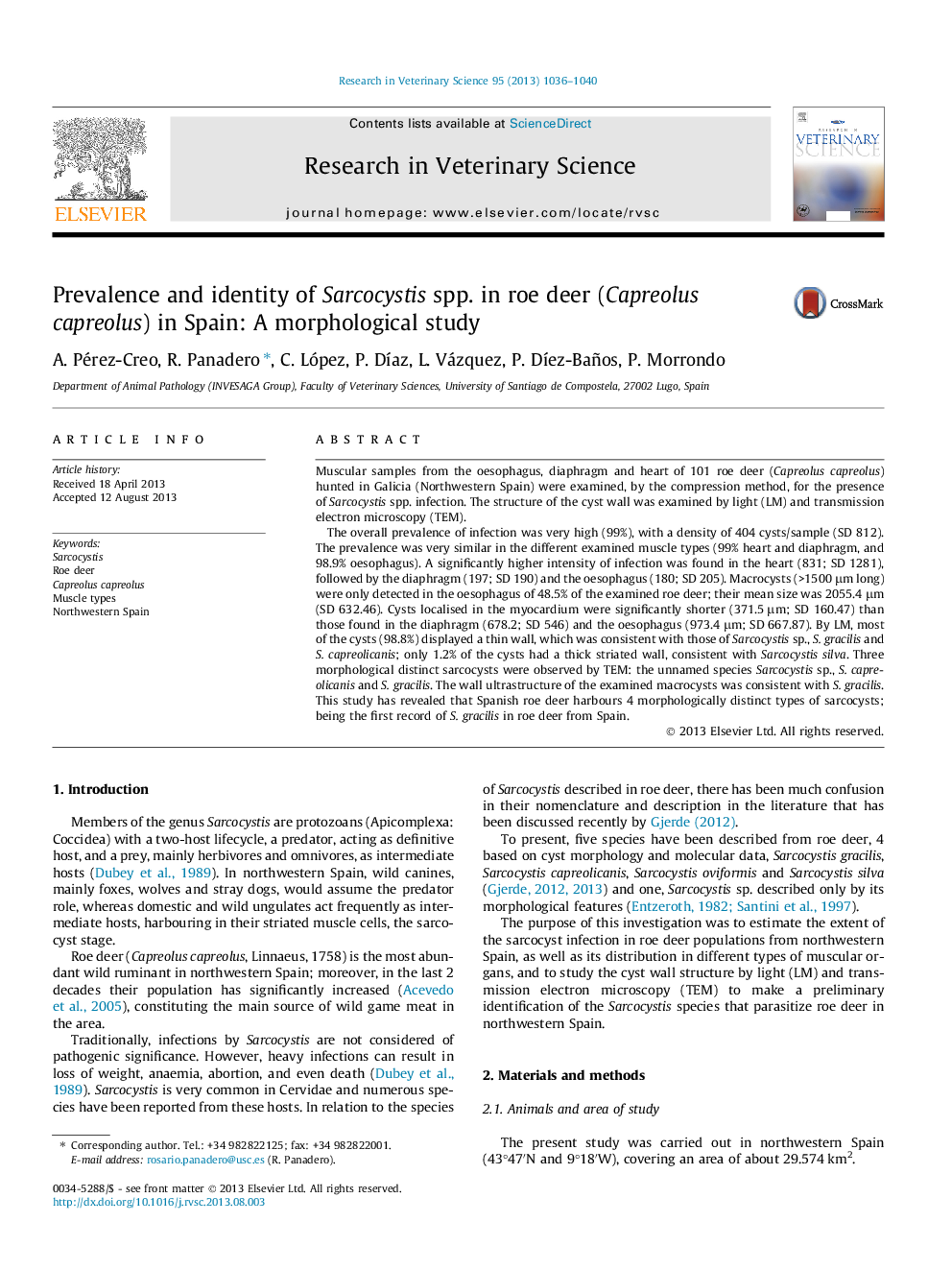| Article ID | Journal | Published Year | Pages | File Type |
|---|---|---|---|---|
| 2454812 | Research in Veterinary Science | 2013 | 5 Pages |
Muscular samples from the oesophagus, diaphragm and heart of 101 roe deer (Capreolus capreolus) hunted in Galicia (Northwestern Spain) were examined, by the compression method, for the presence of Sarcocystis spp. infection. The structure of the cyst wall was examined by light (LM) and transmission electron microscopy (TEM).The overall prevalence of infection was very high (99%), with a density of 404 cysts/sample (SD 812). The prevalence was very similar in the different examined muscle types (99% heart and diaphragm, and 98.9% oesophagus). A significantly higher intensity of infection was found in the heart (831; SD 1281), followed by the diaphragm (197; SD 190) and the oesophagus (180; SD 205). Macrocysts (>1500 μm long) were only detected in the oesophagus of 48.5% of the examined roe deer; their mean size was 2055.4 μm (SD 632.46). Cysts localised in the myocardium were significantly shorter (371.5 μm; SD 160.47) than those found in the diaphragm (678.2; SD 546) and the oesophagus (973.4 μm; SD 667.87). By LM, most of the cysts (98.8%) displayed a thin wall, which was consistent with those of Sarcocystis sp., S. gracilis and S. capreolicanis; only 1.2% of the cysts had a thick striated wall, consistent with Sarcocystis silva. Three morphological distinct sarcocysts were observed by TEM: the unnamed species Sarcocystis sp., S. capreolicanis and S. gracilis. The wall ultrastructure of the examined macrocysts was consistent with S. gracilis. This study has revealed that Spanish roe deer harbours 4 morphologically distinct types of sarcocysts; being the first record of S. gracilis in roe deer from Spain.
